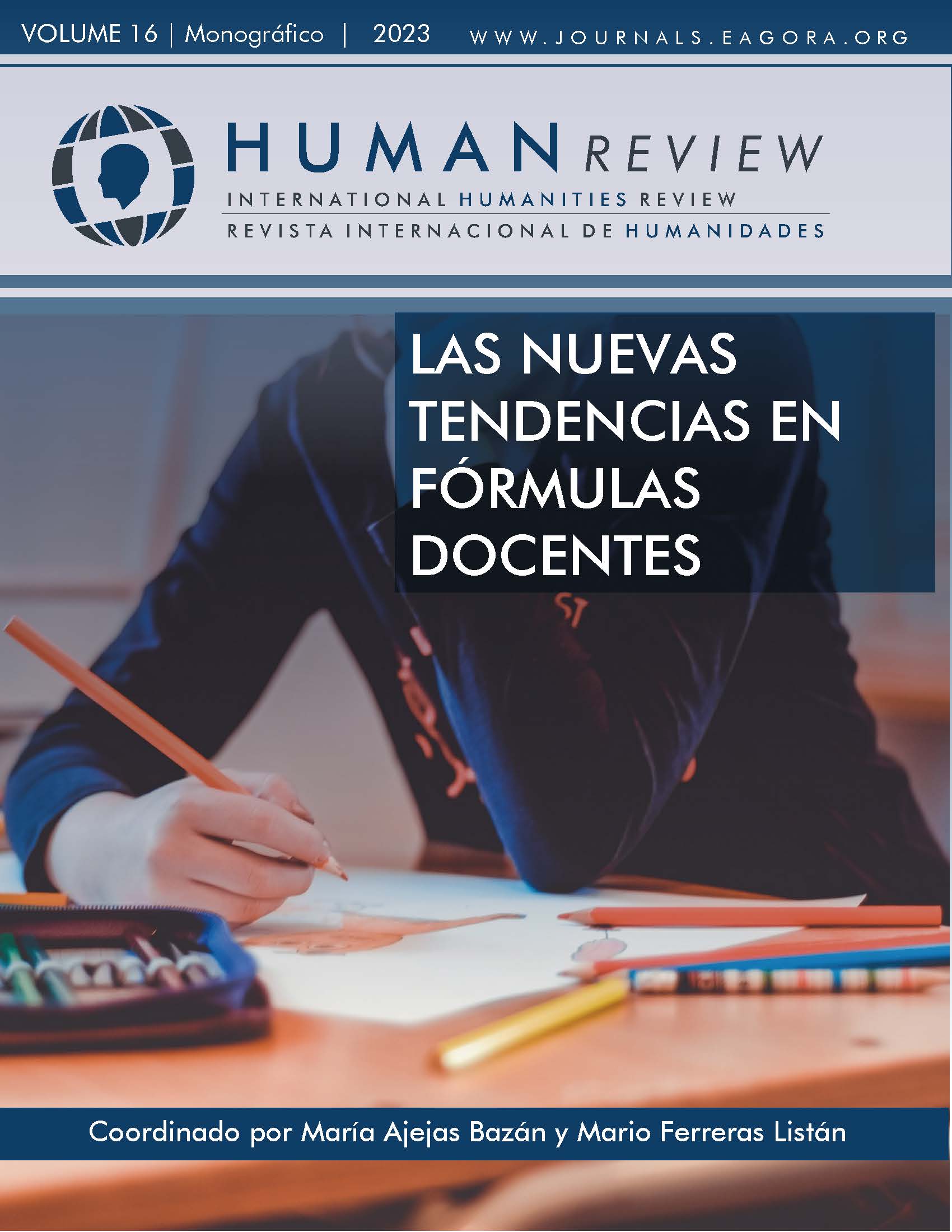The reality built through the architectural model
A teaching-learning experience in high school
DOI:
https://doi.org/10.37467/revhuman.v12.4660Keywords:
Models, High school, 20th century architecture, Investigation project, Drawing, Experience, Teaching-learningAbstract
The construction of architectural models as a pedagogical tool applied in the high school stage allows the student to understand the analyzed building architecturally, while increasing their spatial vision, becoming familiar with the use of architectural plans. In addition, the historical study of the building, in this case, in which he has developed his studies in recent years, initiates him in the habit of university research, getting involved from the beginning in achieving the objectives set, so this type of projects can be considered an interesting teaching-learning experience.
References
Alba López, J.C. (1993). Reseña histórica. En Instituto Claudio Moyano Reforma y Ampliacion. Zamora 1990-1992 (pp. 9-13).
Ávila de la Torre, Á. (2000). Arquitectura y urbanismo en Zamora : (1850-1950). Instituto de Estudios Zamoranos “Florián de Ocampo”.
Bilda, Z., y Demirkan, H. (2003). An insight on designers sketching activities in traditional versus digital media. Design studies, 24(1), 27-50.
Carazo Lefort, E. (2011). Maqueta o modelo digital. La pervivencia de un sistema. EGA Expresión Gráfica Arquitectónica, 16(17), 30-41. https://doi.org/10.4995/ega.2011.881
Carazo Lefort, E. (2018). La maqueta como realidad y como representación. Breve recorrido por la maqueta de arquitectura en los 25 años de EGA. EGA Revista de Expresión Gráfica Arquitectónica, 23(34). https://doi.org/10.4995/ega.2018.10849
Carazo Lefort, E., y Galvan Desvaux, N. (2014). Aprendiendo con maquetas. Pequeñas maquetas para el análisis de arquitectura. EGA. Revista de Expresión Gráfica Arquitectónica, 19(24). https://doi.org/10.4995/ega.2014.1828
Consález, L. (2005). Maquetas : la representación del espacio en el proyecto arquitectónico (1ª ed., 3ª tirada. ed.). Gustavo Gili.
Do, E. Y.-L., y Gross, M. D. (2001). Thinking with Diagrams in Architectural Design. Artificial Intelligence Review, 15(1), 135-149. https://doi.org/10.1023/A:1006661524497
Dunn, N. (2010). Maquetas de arquitectura : medios, tipos, aplicación (1ª ed.). Blume.
Gómez Zepeda, M., y Ortiz Tabarez, J. C. (2022). Maquetas experimentales para conceptualizar arquitectura. XIX Congreso Internacional de Expresión Gráfica Arquitectónica, 671-674. https://doi.org/http://dx.doi.org/10.31428/10317/11422
Herrero Pérez, B., Baviera Llópez, E., y Llopis Verdú, J. (2022). La expresión gráfica digital como herramienta para interpretar la historia. El caso del Colegio San José de Valencia. XIX Congreso Internacional de Expresión Gráfica Arquitectónica, 35-38. https://doi.org/http://dx.doi.org/10.31428/10317/11219
Juan Gutiérrez, P. J. (2012). El tiempo del modelo (virtual y real) de representación de la arquitectura. EGE Revista de Expresión Gráfica en la Edificación(7), 18-23.
Lucas del Teso, P. (1993). Datos de partida y objetivos del proyecto. En Instituto Claudio Moyano Reforma y Ampliacion. Zamora 1990-1992 (pp. 42-46).
Ramírez Guzmán, A., y Lozano Ramírez, A. (2018). El desarrollo del “pensamiento gráfico” en el estudiante de arquitectura como parte de su proceso creativo. Arquitectura y Urbanismo, 39(3), 101-112.
Rodríguez Méndez, F. J. (1993). Antecedentes y desarrollo de la obra. En Instituto Claudio Moyano Reforma y Ampliacion. Zamora 1990-1992 (pp. 42-46).
Sarmiento Ocampo, J. A. (2017). Maquetas y prototipos como herramientas de aprendizaje en arquitectura. Revista Científica de Arquitectura y Urbanismo, 38(2), 43-52.
Úbeda Blanco, M., Villalobos Alonso, D., y Pérez Barreiro, S. (2022). La maqueta como experiencia docente: el caso de la Iglesia Unitaria de Frank Lloyd Wright (1905-1908). XIX Congreso Internacional de Expresión Gráfica Arquitectónica, 663-666. https://doi.org/http://dx.doi.org/10.31428/10317/11420
VV.AA. (1993). Instituto Claudio Moyano : reforma y ampliación : Zamora 1990-1992. BEGAR.
Wilton-Ely, J. (2006). La maqueta arquitectónica: Barroco inglés. DC. Revista de crítica arquitectónica(15-16), 29-40.
Downloads
Published
How to Cite
Issue
Section
License
Those authors who publish in this journal accept the following terms:
- Authors will keep the moral right of the work and they will transfer the commercial rights.
- After 1 year from publication, the work shall thereafter be open access online on our website, but will retain copyright.
- In the event that the authors wish to assign an Creative Commons (CC) license, they may request it by writing to publishing@eagora.org









